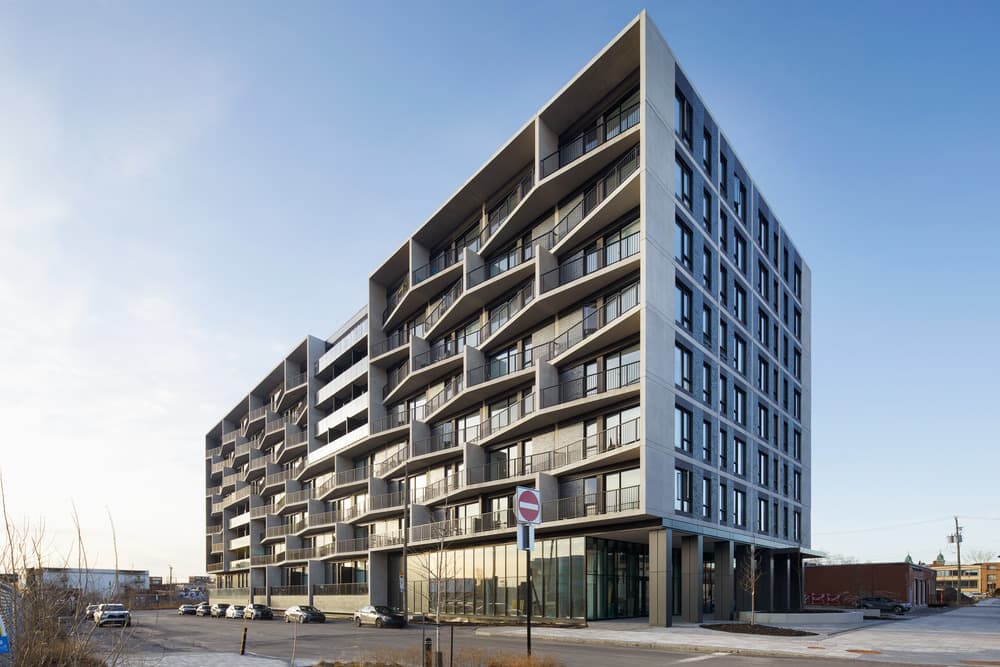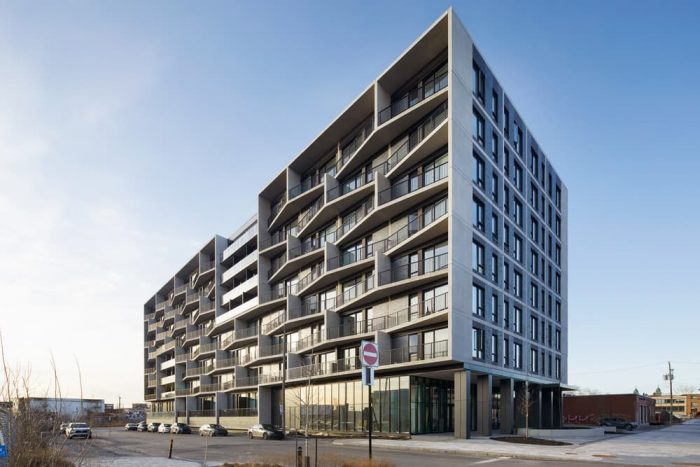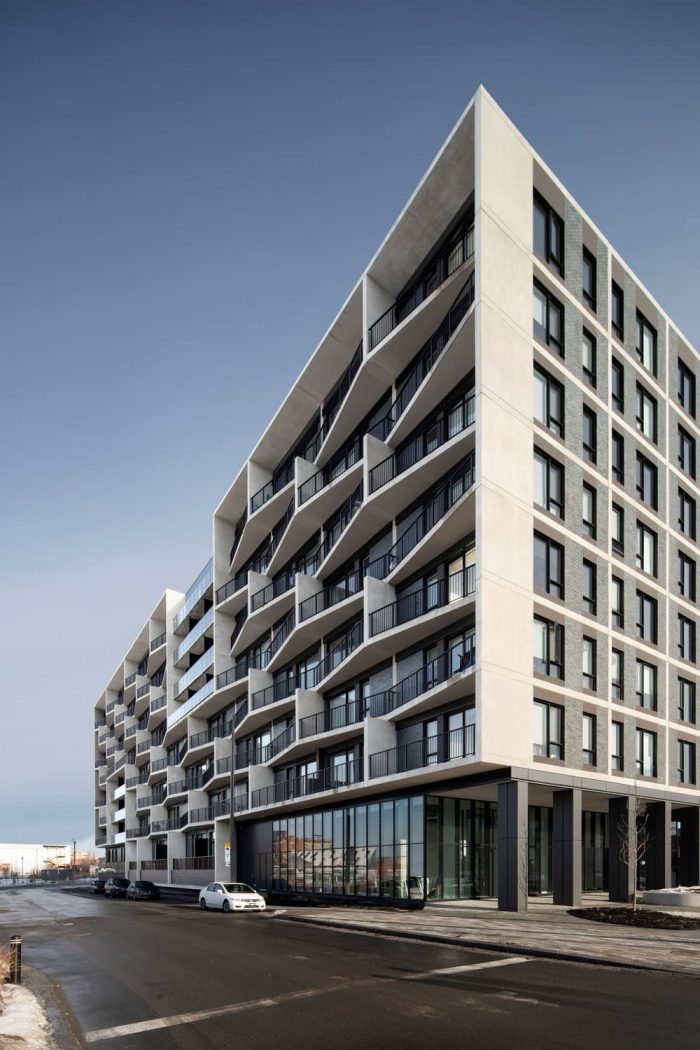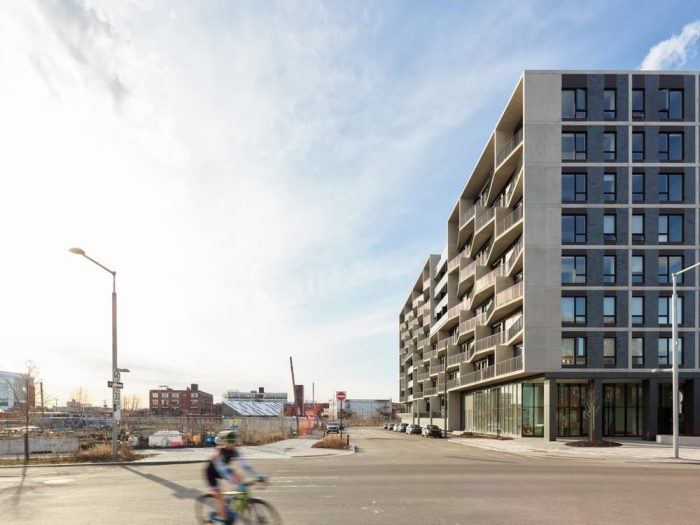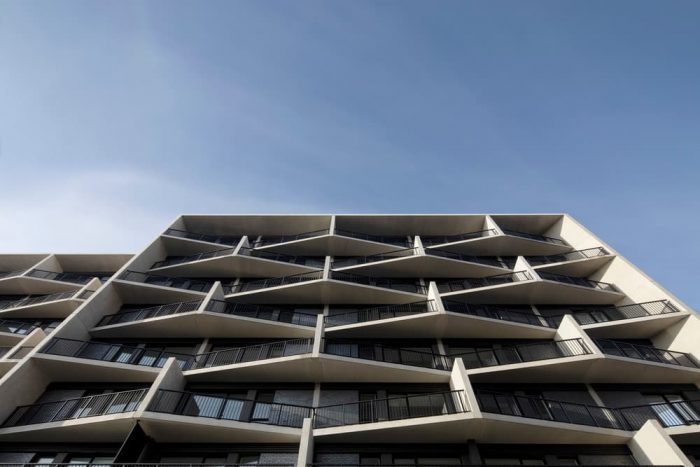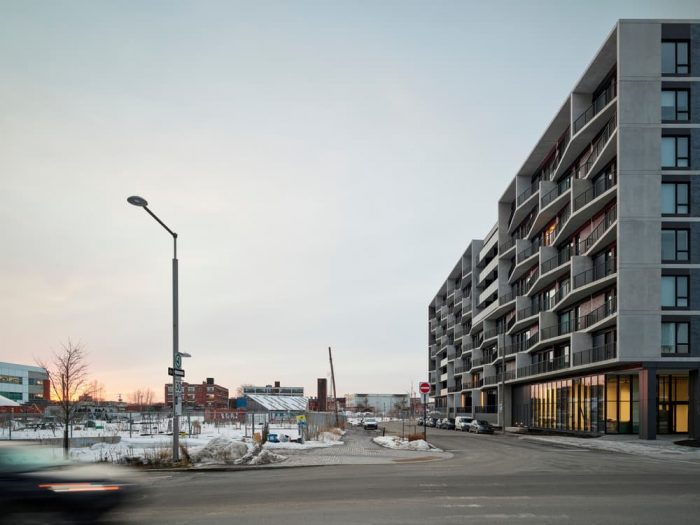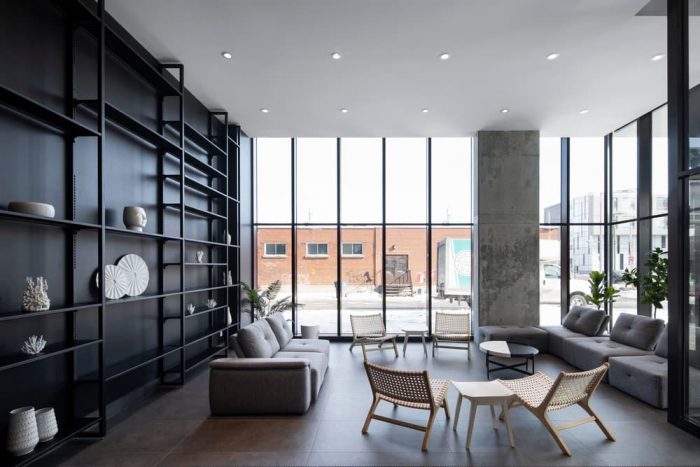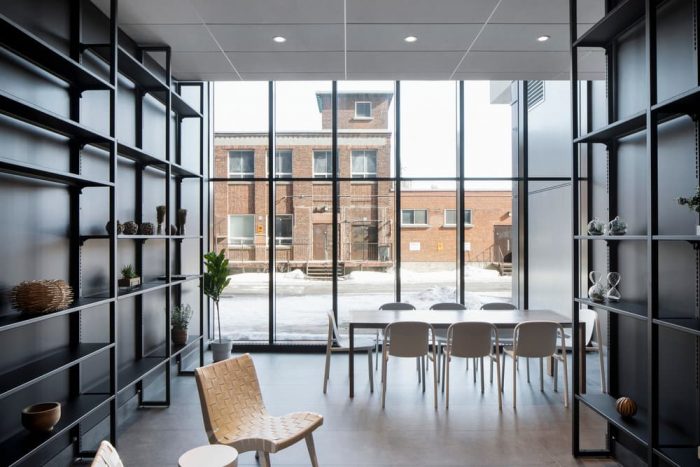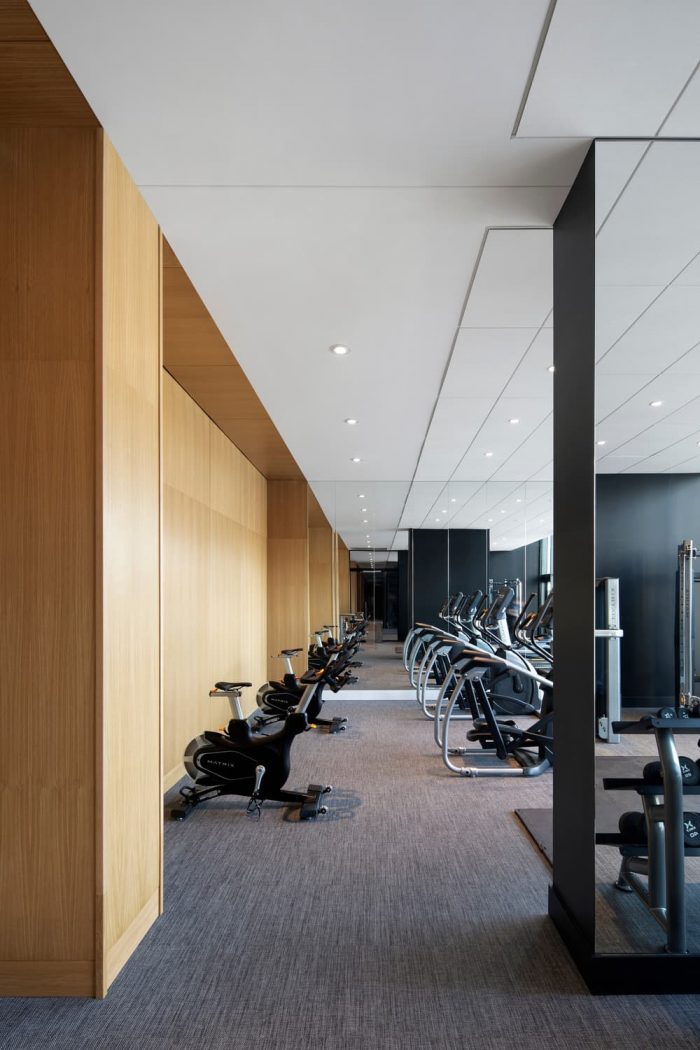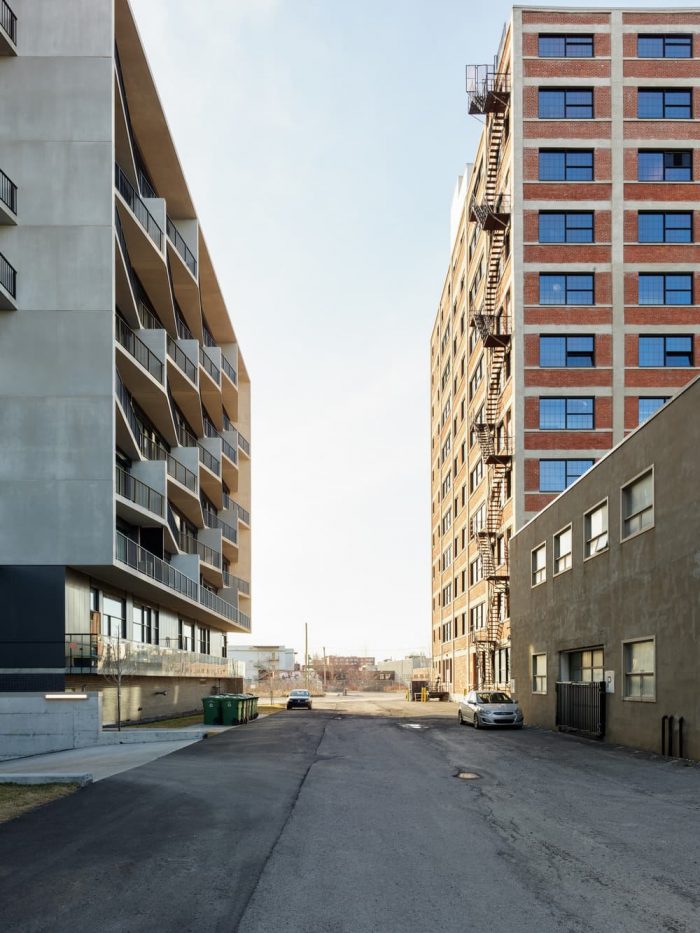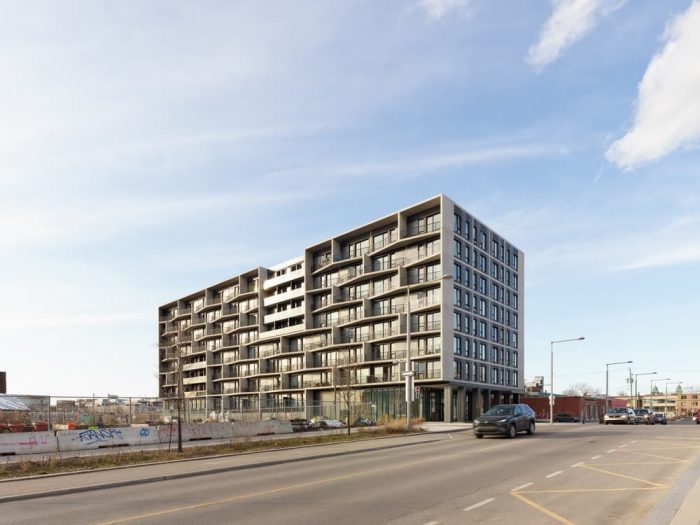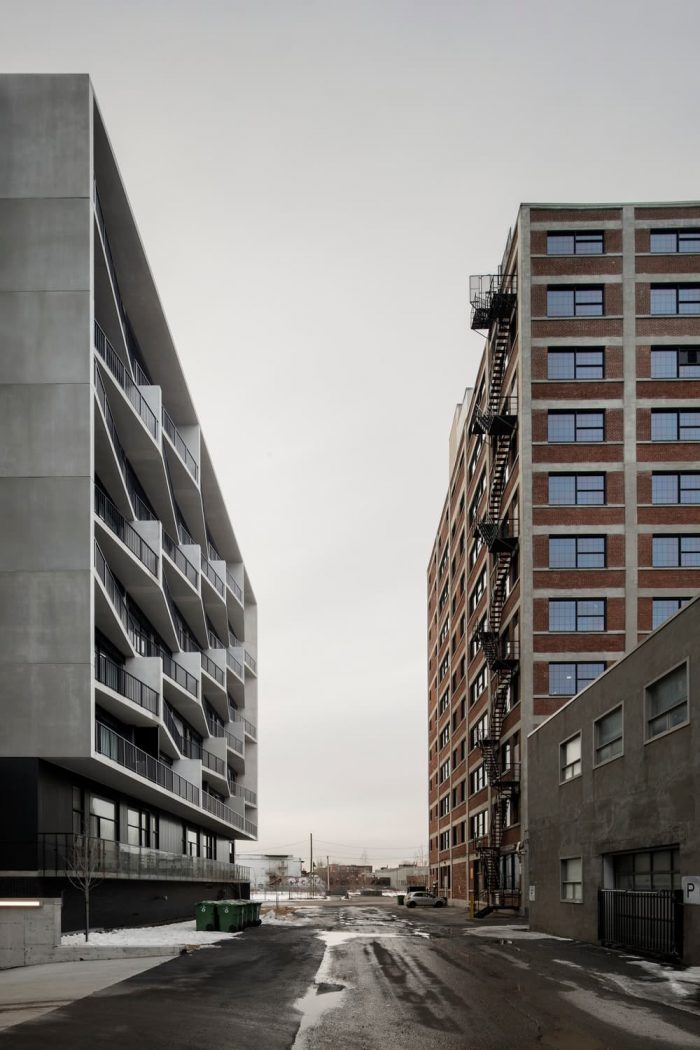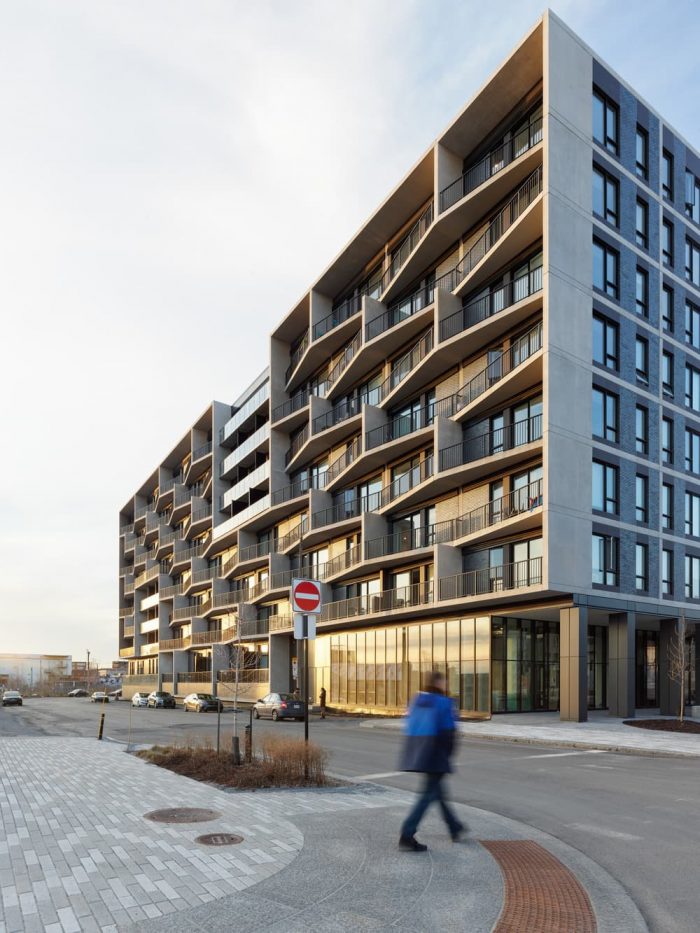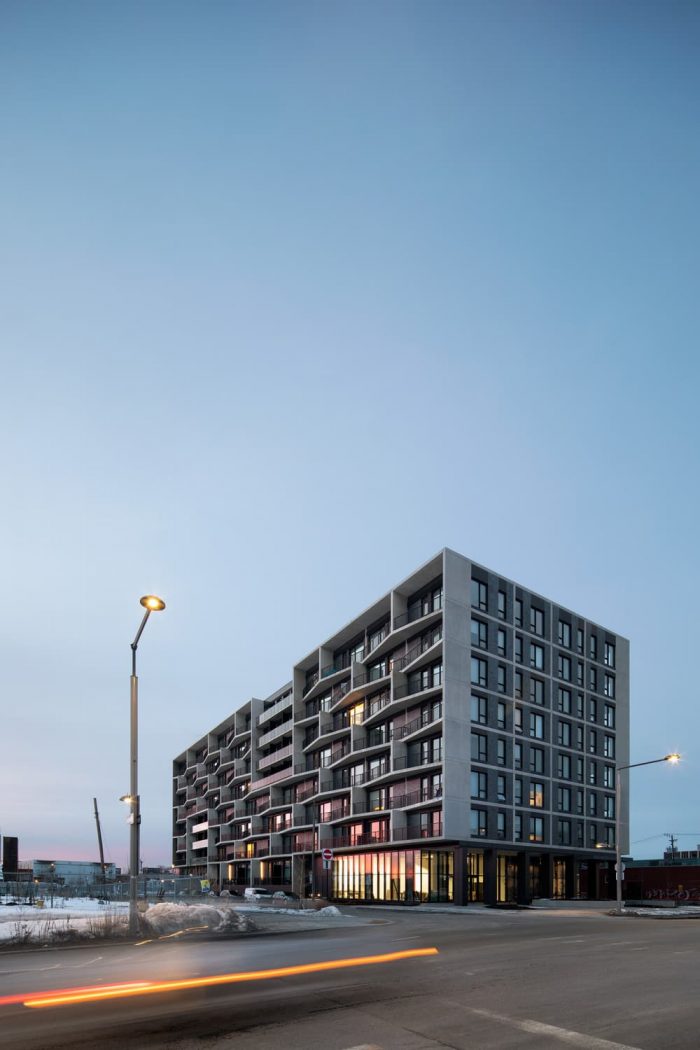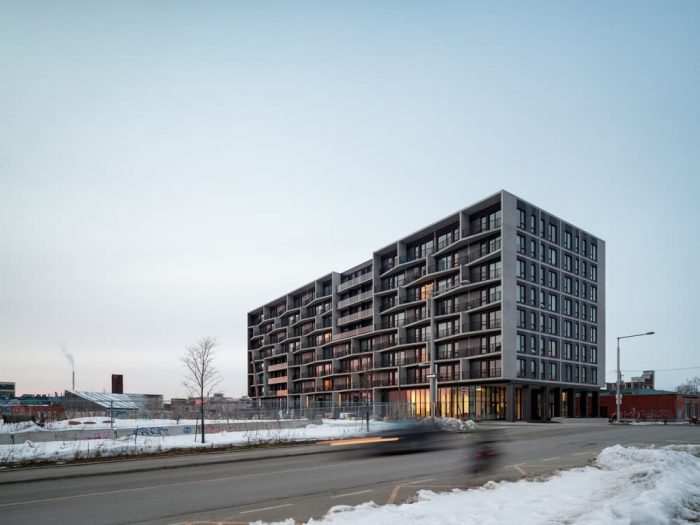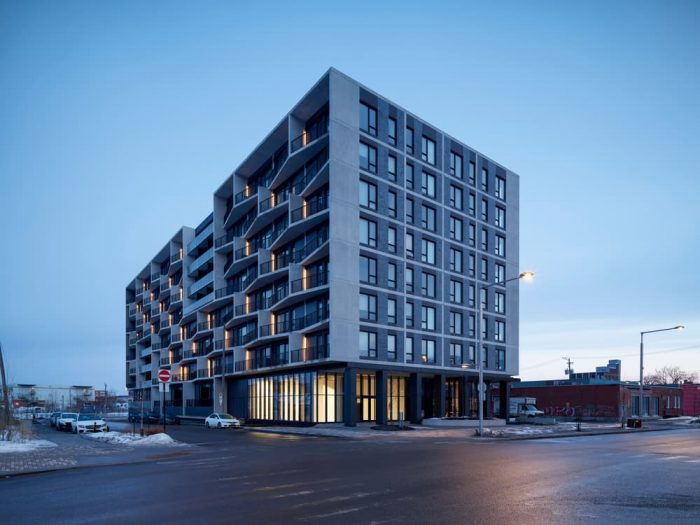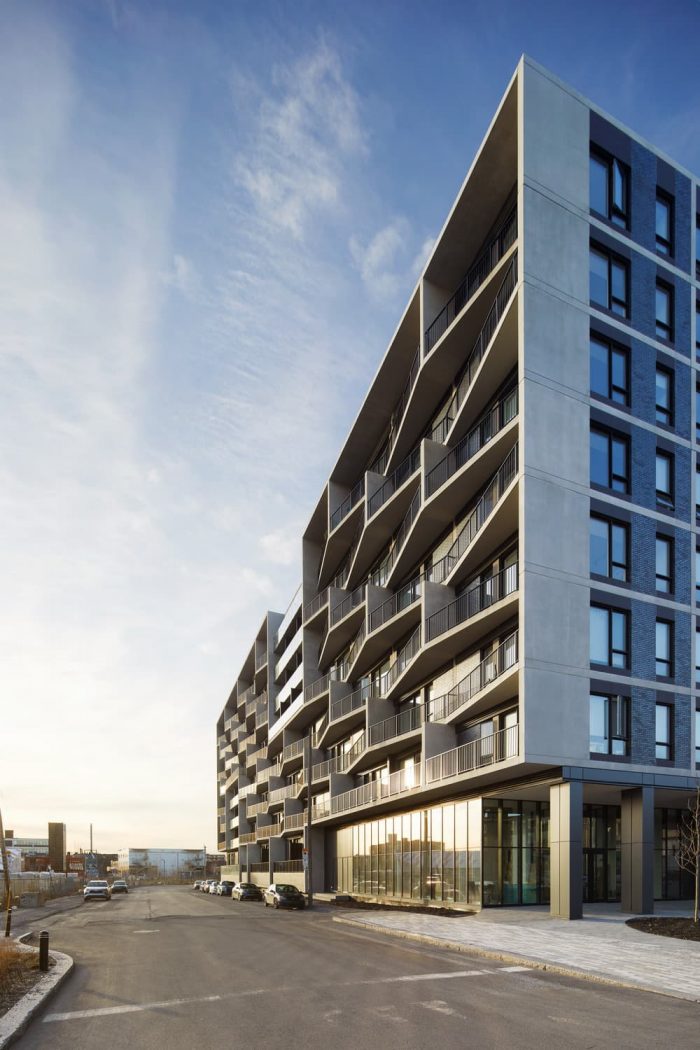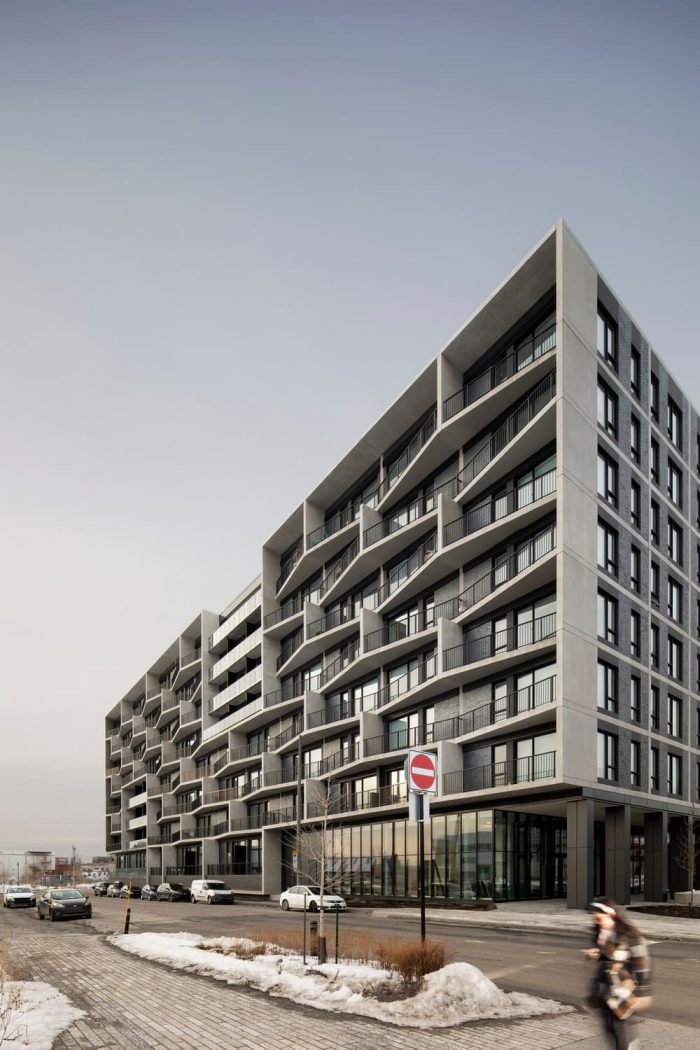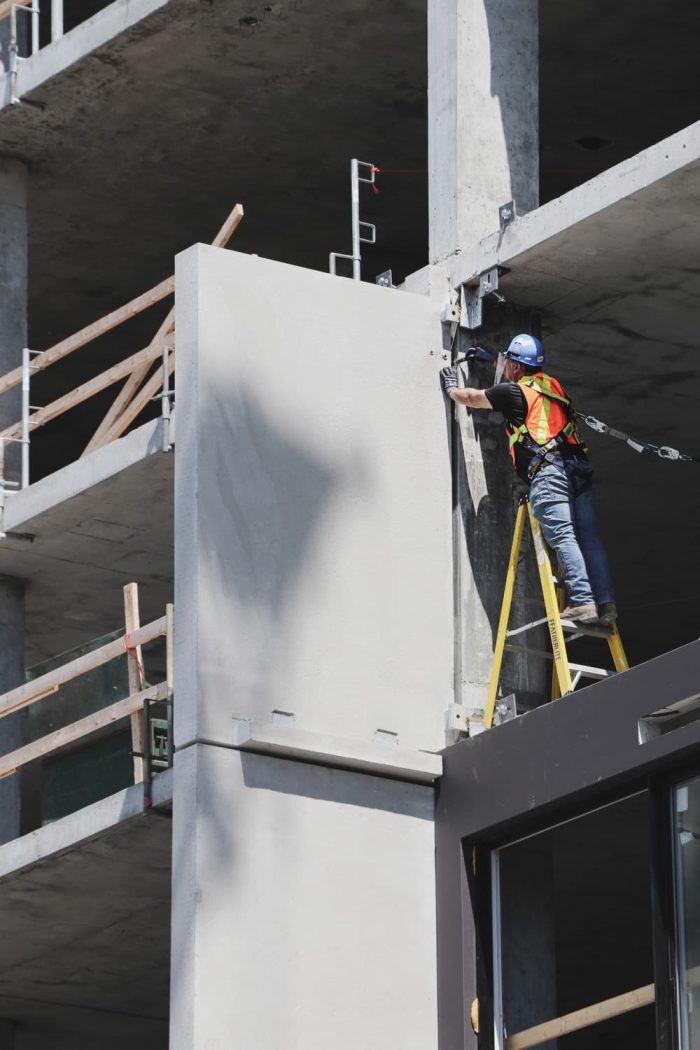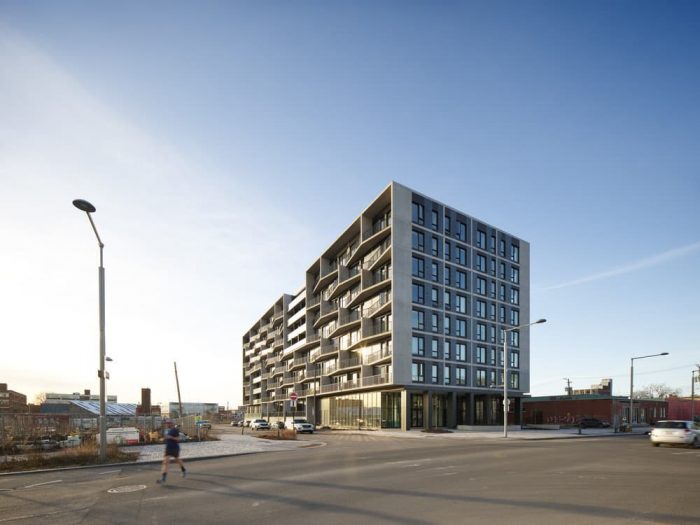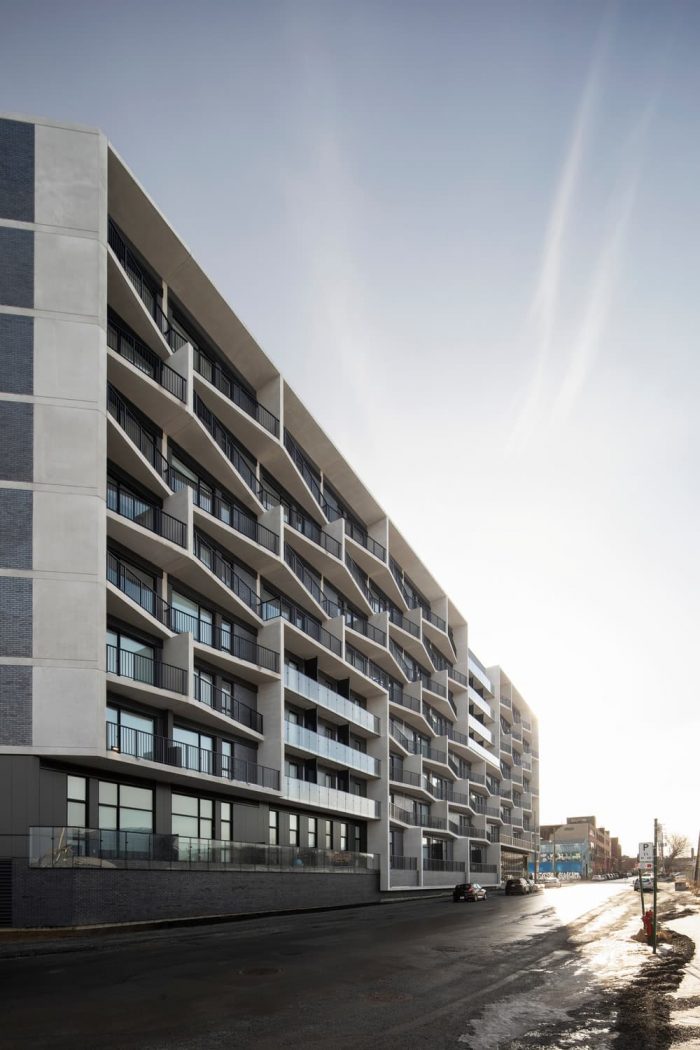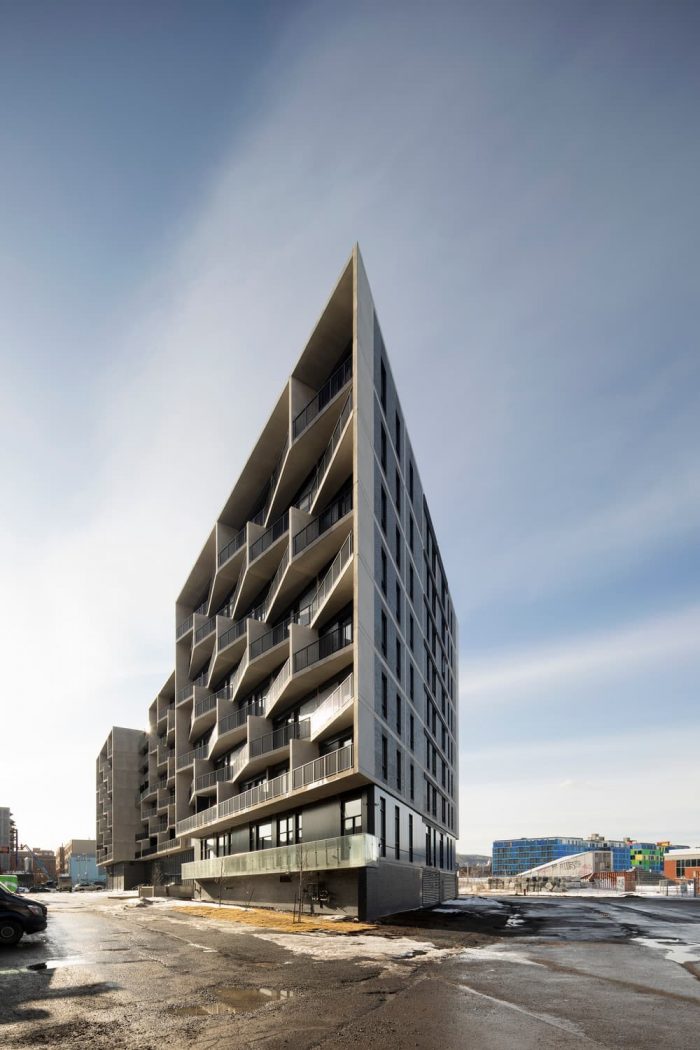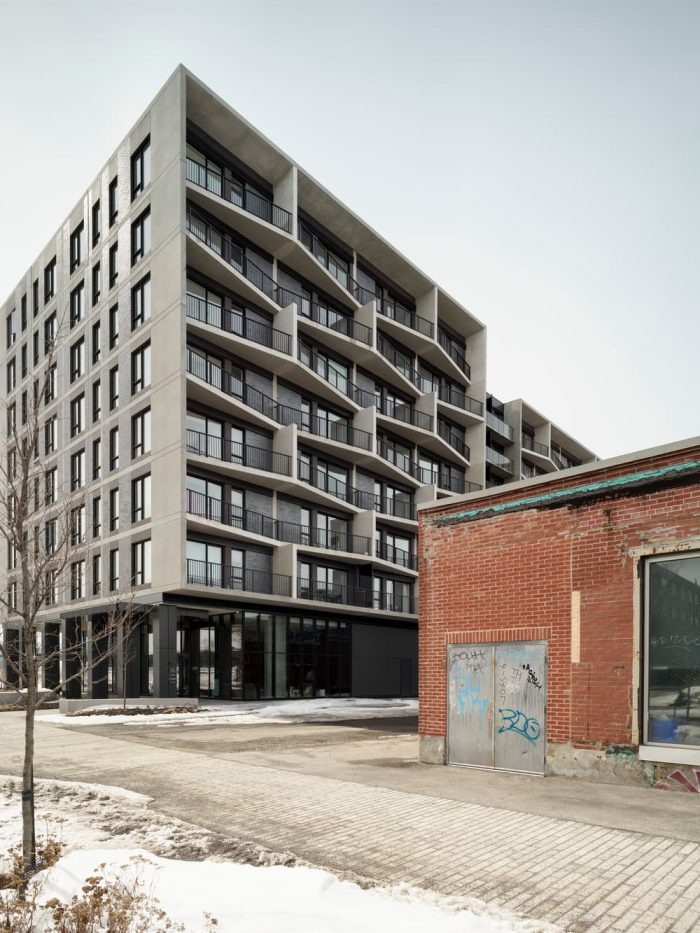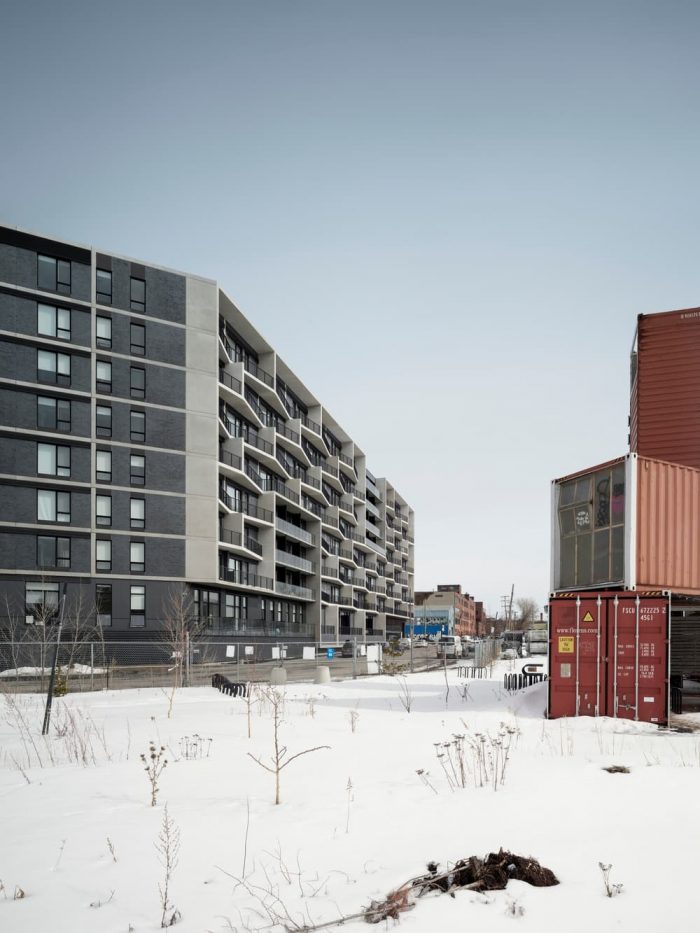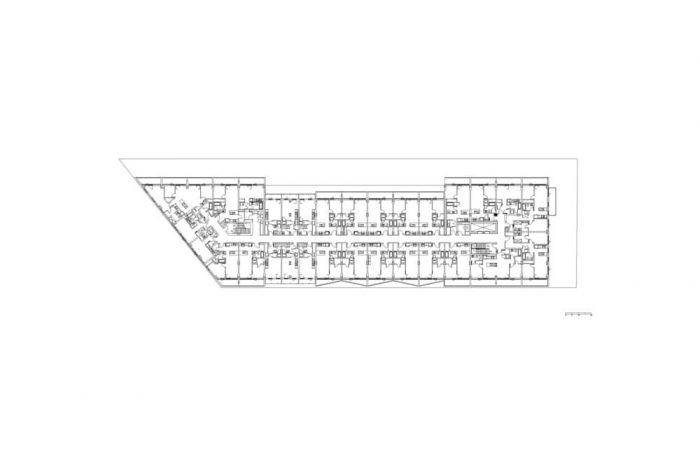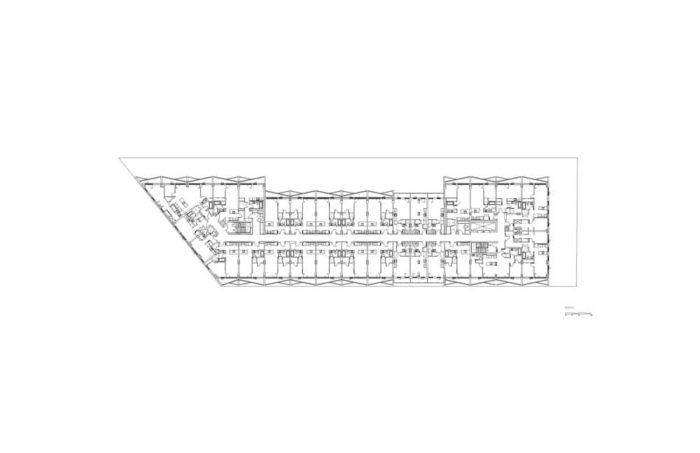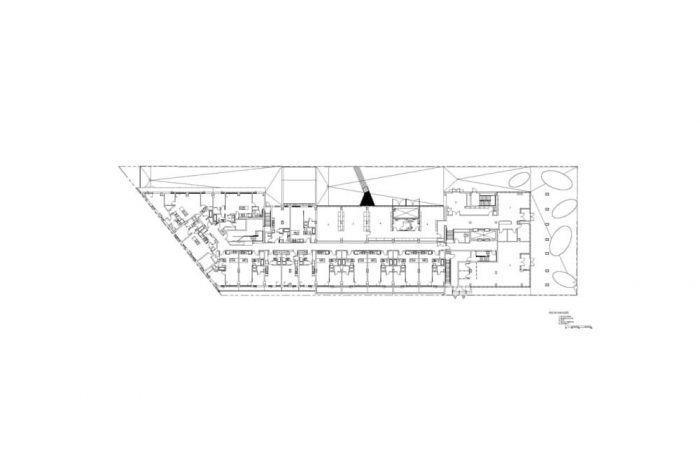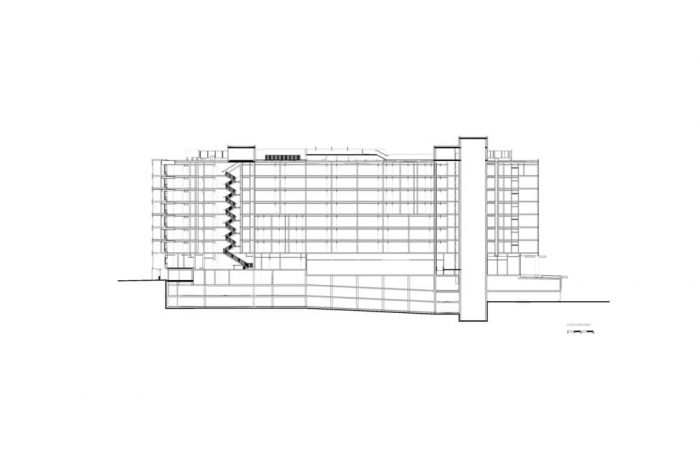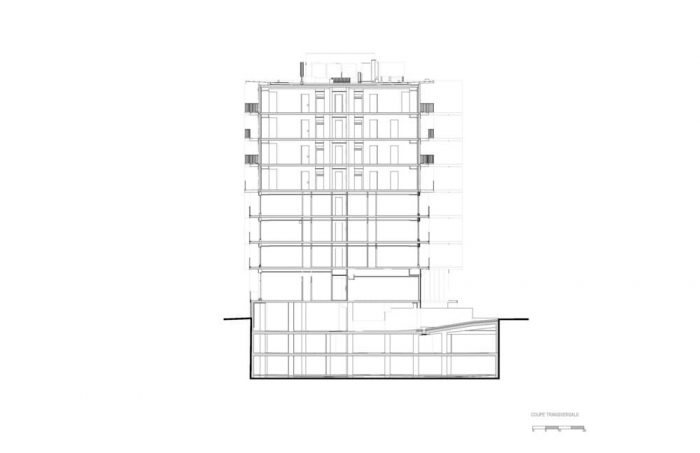为了给蒙特利尔Outremont社区的一个前铁路场和工业部门注入新的活力,ACDF被委托设计这个8层的公寓楼,以帮助为该社区设定一个新的基调,并为蒙特利尔大学新校区周围出现的一个新的住宅社区作出贡献。
In order to breathe new life into a former railyard and industrial sector in Montreal’s Outremont neighborhood, ACDF was commissioned to design the 8-story apartment complex to help set a new tone for the neighborhood and to contribute to a new residential community emerging around the new campus of Université de Montréal.
Vivre是沿着Thérèse Lavoie-Roux街建造的第一批建筑之一,该街铺设在旧的火车场和铁轨上,将该社区与新校园以及蒙特利尔的历史性公园大道连接起来。作为在重新思考的地区出现的第一批项目之一,ACDF接受了这个机会,在为未来的建设提供一个鼓舞人心的建筑方面设定了高标准。
Vivre is one of the first structures to be built along Thérèse Lavoie-Roux Street, paved across the old train yard and tracks to connect the neighborhood with the new campus, as well as to Montreal’s historic Park Avenue. As one of the first projects to emerge in the rethought district, ACDF embraced the opportunity to set the bar high in terms of delivering an inspiring architecture for future builds.
“我们一开始就把重点放在重新改造工业区的一致性上,以确保我们不会把该区的历史和精神抛在脑后,同时找到庆祝其工业灵魂的方法,”ACDF总裁Maxime-Alexis Frappier解释。”这要求我们采取与城市其他地区的项目非常不同的设计方法。我们希望确定该建筑能够舒适地融入其独特的环境。
“We began by focusing on coherency in requalifying the industrial zone to ensure that we wouldn’t leave the district’s history and spirit behind while finding ways to celebrate its industrial soul,” explains ACDF President, Maxime-Alexis Frappier. “That required a very different design approach from our projects in other parts of the city. We wanted to be certain that the building would fit comfortably into its unique context.”
Vivre以一种安静的自豪感出现在旧货场的场地上,它是按照其邻居的形象来构思的。为了呼应场地的工业历史,ACDF采用了该区历史建筑的工业足迹,通常设计成混凝土结构网格,根据功能需要用砖和玻璃填充。在采取这种方法时,ACDF从建筑周围的工业语言中获得灵感,开始了现代的重新诠释。Vivre采用了裸露的混凝土网格的形式,但使用了ACDF定制的预制三板系统。砖块和窗户填充了网格的南北立面,面板系统促进了从混凝土网格中拉出一系列三角形阳台的过程。
Emerging from the old railyard site with a quiet proudness, Vivre was conceived in the image of its neighbors. To echo the site’s industrial past, ACDF adopted the industrial footprint of the district’s historic buildings, typically designed as concrete structural grids, filled in with brick and glass according to their functional needs. In taking that approach, ACDF embarked on a contemporary reinterpretation inspired by the industrial language of the building’s surroundings. Vivre took the form of an exposed concrete grid but used a prefabricated three-panel system custom designed by ACDF. Bricks and windows filled in the grid’s north and south facades, and the panel system facilitated the process of pulling out a series of triangular-shaped balconies from the concrete grid.
Frappier指出:”在住宅楼的建筑构成中整合阳台总是一个巨大的挑战,在这个项目中更是如此,因为我们想创造一个充满了邻近建筑的工业建筑语言的建筑,”。每个阳台的水平部分连接到结构的一侧,更深的部分通过垂直连接到容纳窗户的混凝土面板上悬挂。由于ACDF使用了预制系统,甚至建筑的深锰砖也被浇铸在混凝土面板上。Frappier说:”预制系统的质量和性能绝对是完美的,而且装配的简易性简化了保持我们所设想的粗糙外墙的过程。”它几乎是断开的,由于减少了对热桥的干预,建筑体验到了更高的效率。
“The integration of balconies in the architectural composition of a residential building is always a great challenge and even more in the case of this project since we wanted to create a building imbued with the industrial architectural language of the neighboring buildings,” notes Frappier. The horizontal portion of each balcony attaches to one side of the structure, with deeper parts suspended by a vertical attachment to the concrete panel that houses the windows. With ACDF’s use of a precast system, even the building’s dark manganese brick is cast into the concrete panel. The quality and performance of the precast system is absolutely perfect, and the ease of assembly simplified the process of maintaining the rough façade that we envisioned,” says Frappier. “It’s almost disconnected, and the building experiences greater efficiency due to fewer interventions in the thermal bridge.
尽管Vivre的部分设计包括一个由露台、游泳池和花园组成的屋顶绿洲,但ACDF在接受对地面展示的更多投资方面的声誉是最重要的,这确保了建筑最终与城市结构的人类尺度互动。Vivre体现了ACDF的行人整合方法,在这里,人性是主要的材料,并建立了新的标准来创造情感而不奢侈。Vivre的底层俯瞰着一个社区花园,并通向一个景观广场,居民和行人从一个绿色的入口进入振兴区中受益。ACDF在底层设置了便利设施,以注入活力并与周围社区建立联系。Vivre的底层健身房、工作区、休息室等将建筑的能量传递到街道层面,并为未来的建设定下基调。
Although part of Vivre’s design includes a rooftop oasis comprised of a terrace, a swimming pool, and a garden, ACDF’s reputation for embracing greater investment in the ground-level presentation is front and center, ensuring that the building ultimately interacts with the human scale of the urban fabric. Vivre embodies ACDF’s pedestrian integration approach, where humanity is the primary material, and new standards are established to create emotion without extravagance. The ground floor of Vivre overlooks a community garden and opens onto a landscaped square, where residents and pedestrians benefit from a green entry point into the revitalized district. ACDF positioned amenities on the ground level to infuse vibrancy and build connections with the surrounding community. Vivre’s ground floor gym, work area, lounge, and more transport the energy of the building down to street level and set the tone for future builds.
由于城市希望进一步利用重新利用的场地,提供更接近人们工作地点的住宅选择,ACDF与Vivre的平衡对话的成就为这种努力创造了条件。以改善对公共领域的贡献为重点,ACDF继续引领围绕世界顶级市场的城市发展重点的重新思考的讨论。”Maxim-Alexis Frappier总结说:”我们的注意力集中在确保这个项目将为该行业的重新定义做出贡献。”我们乐于承担为一个新社区的诞生做出贡献的责任,并在整个过程中创造一种归属感”。
As the city looks to further capitalize on repurposed sites to provide residential options closer to where people work, ACDF’s achievement of balanced dialogue with Vivre sets the stage for such endeavors. With a focus on improved contributions to the public realm, ACDF continues to lead discussions surrounding the rethinking of urban development priorities in the world’s top markets. “Our attention was focused on ensuring that this project would make a contribution to the requalification of the sector,” concludes Maxime-Alexis Frappier. “We relished the responsibility of contributing to the birth of a new neighborhood, and for creating a sense of belonging throughout.”
Architects: ACDF Architecture
Area : 150000 ft²
Year : 2022
Photographs :Adrien Williams
General Contractor : Presti Demeures et Développements
Structural Engineer : GeniMac Experts-conseils
Mechanical And Electrical Engineers : Équipe SP inc.
Landscape Archictect : BC2
Project Manager : Presti
Client : Presti Demeures et Développements
Architectural Project Team : Maxime-Alexis Frappier, Joan Renaud, Étienne Laplante-Courchesne, Pierre- Olivier Jacques, Laurent Bélisle, Alain Desforges, Pierre-Louis Béneche, Bruno Landry
City : Montreal
Country : Canada

